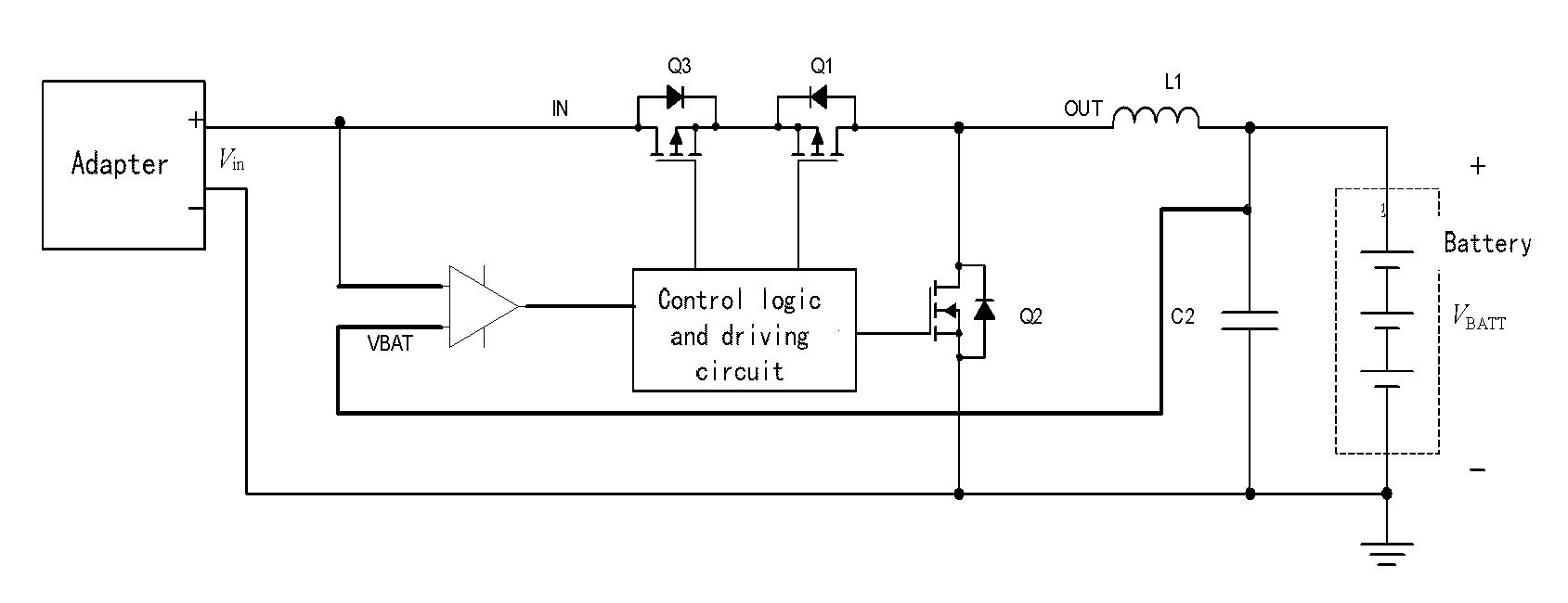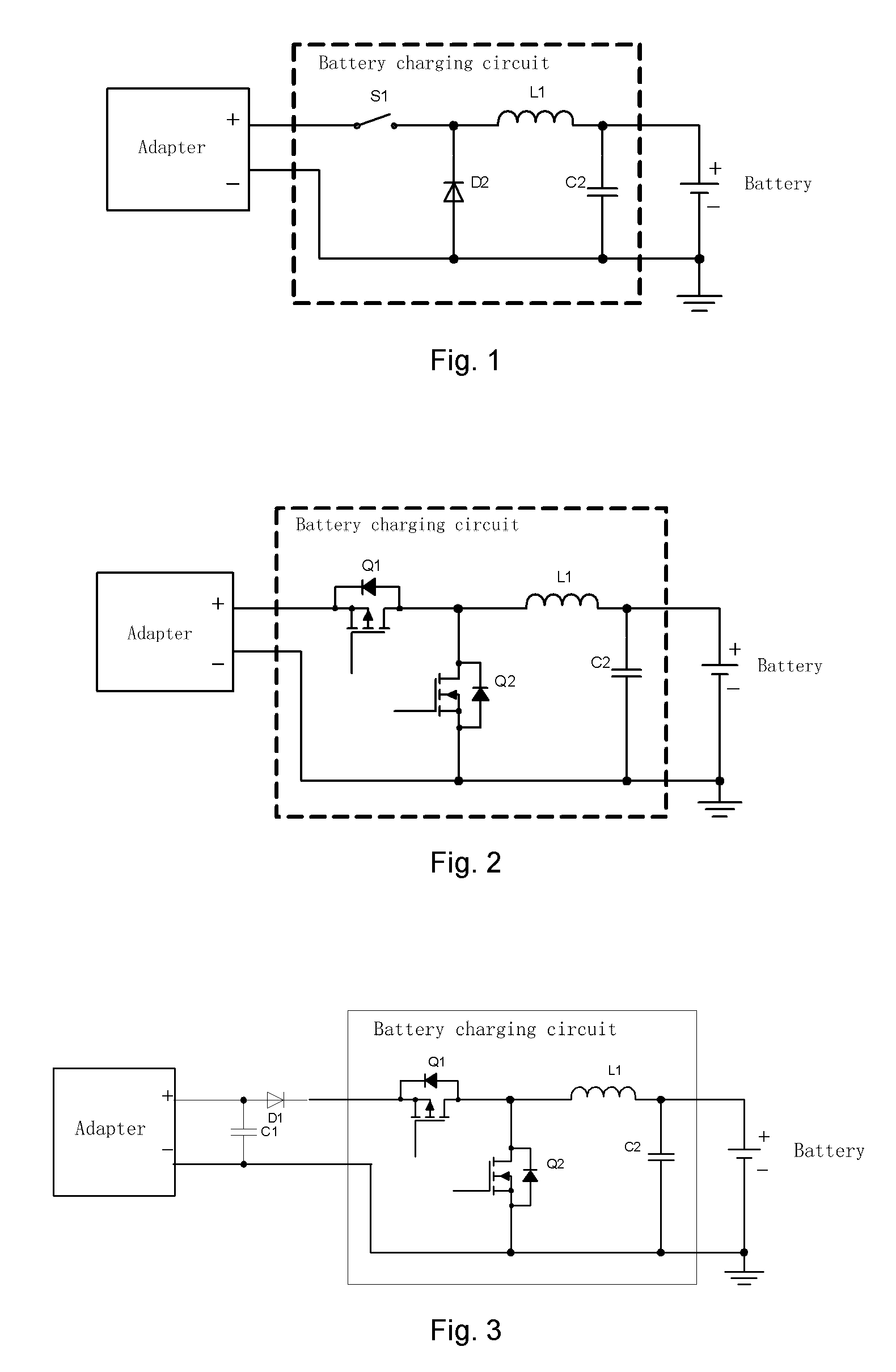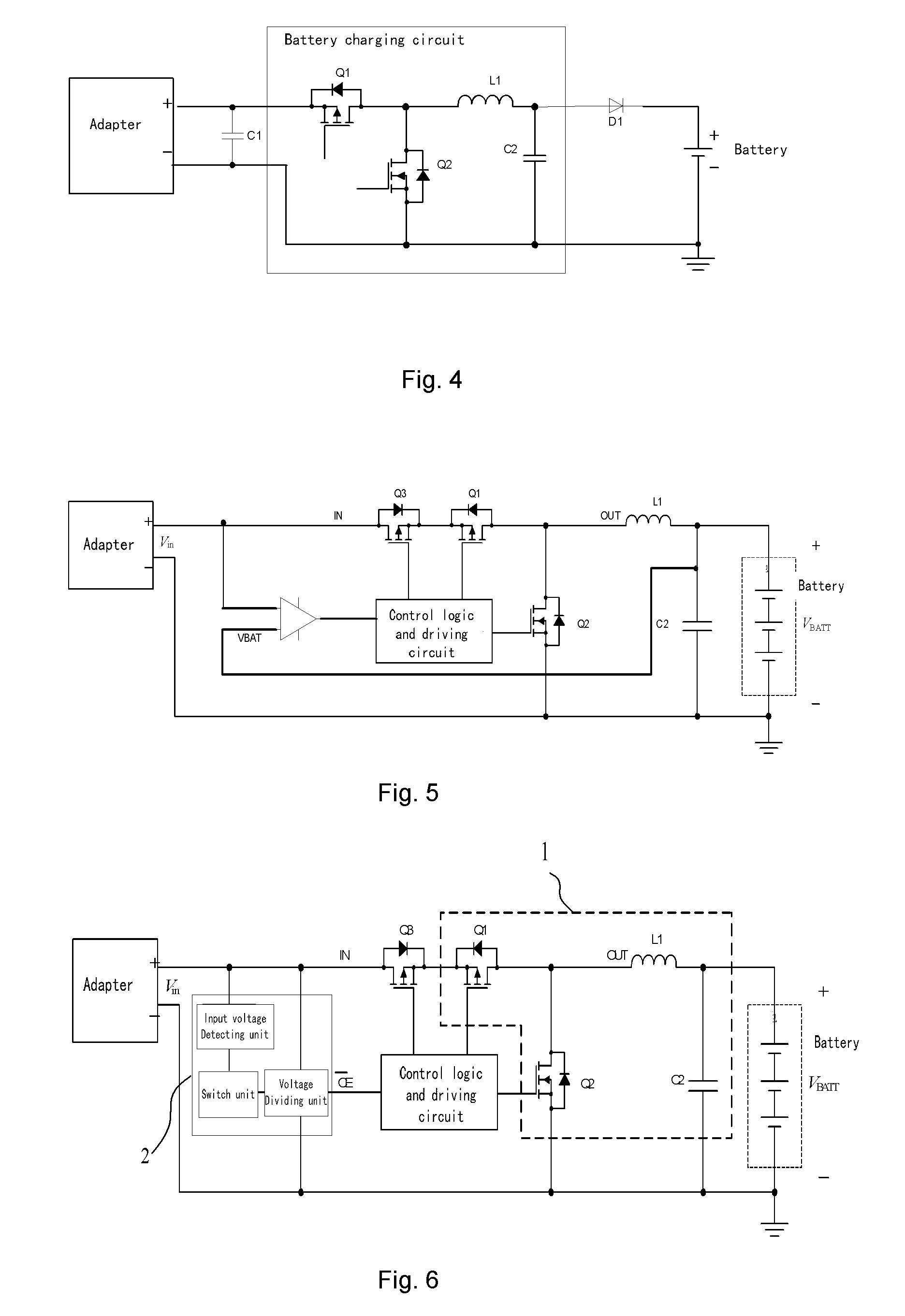Synchronous rectification type battery charging circuit and protection circuit thereof
- Summary
- Abstract
- Description
- Claims
- Application Information
AI Technical Summary
Benefits of technology
Problems solved by technology
Method used
Image
Examples
first embodiment
The First Embodiment
[0029]The synchronous rectification type battery charging circuit comprises a charging main circuit 1, an anti-reflection switch tube Q3, a control logic and driving circuit and a protection circuit 2. The an anti-reflection switch tube Q3 is connected between a power supply adapter and the charging main circuit 1, and the control logic and driving circuit generates a control signal to control turning-on and cutting-off of the charging main circuit 1 and the anti-reflection switch tube Q3. An implementation of the protection circuit is shown in FIG. 6. As shown in FIG. 6, with the maximal charging voltage VBATT-max of the charged battery as the initial detecting voltage value V1 and a predetermined margin V2 of the voltage sag or power-off of the battery charging circuit, by using a voltage detecting circuit whose detecting point is Vth=V1+V2, the protection circuit based on a switch device is formed, so that when the input voltage of the battery charging circuit...
second embodiment
The Second Embodiment
[0039]The protection circuit of the present invention also can be implemented by the method shown in FIG. 8. That is, the threshold voltage and the comparing and control program are first written into a microprocessor; after the input voltage detecting unit inputs to the microprocessor the input voltage detected in real time, the microprocessor then compares the detected input voltage with the threshold voltage, and outputs the corresponding high level or low level to the control logic and driving circuit according to the comparison result. The response and control method of the enable terminal of the control logic and driving circuit for high level and low level is the same as that of the first embodiment.
[0040]To sum up, the present invention can actively detect whether the input voltage of the battery charging circuit is power off, and automatically judge whether the input voltage arrives at a predetermined voltage. Moreover, the present invention has a chara...
PUM
 Login to View More
Login to View More Abstract
Description
Claims
Application Information
 Login to View More
Login to View More - R&D
- Intellectual Property
- Life Sciences
- Materials
- Tech Scout
- Unparalleled Data Quality
- Higher Quality Content
- 60% Fewer Hallucinations
Browse by: Latest US Patents, China's latest patents, Technical Efficacy Thesaurus, Application Domain, Technology Topic, Popular Technical Reports.
© 2025 PatSnap. All rights reserved.Legal|Privacy policy|Modern Slavery Act Transparency Statement|Sitemap|About US| Contact US: help@patsnap.com



